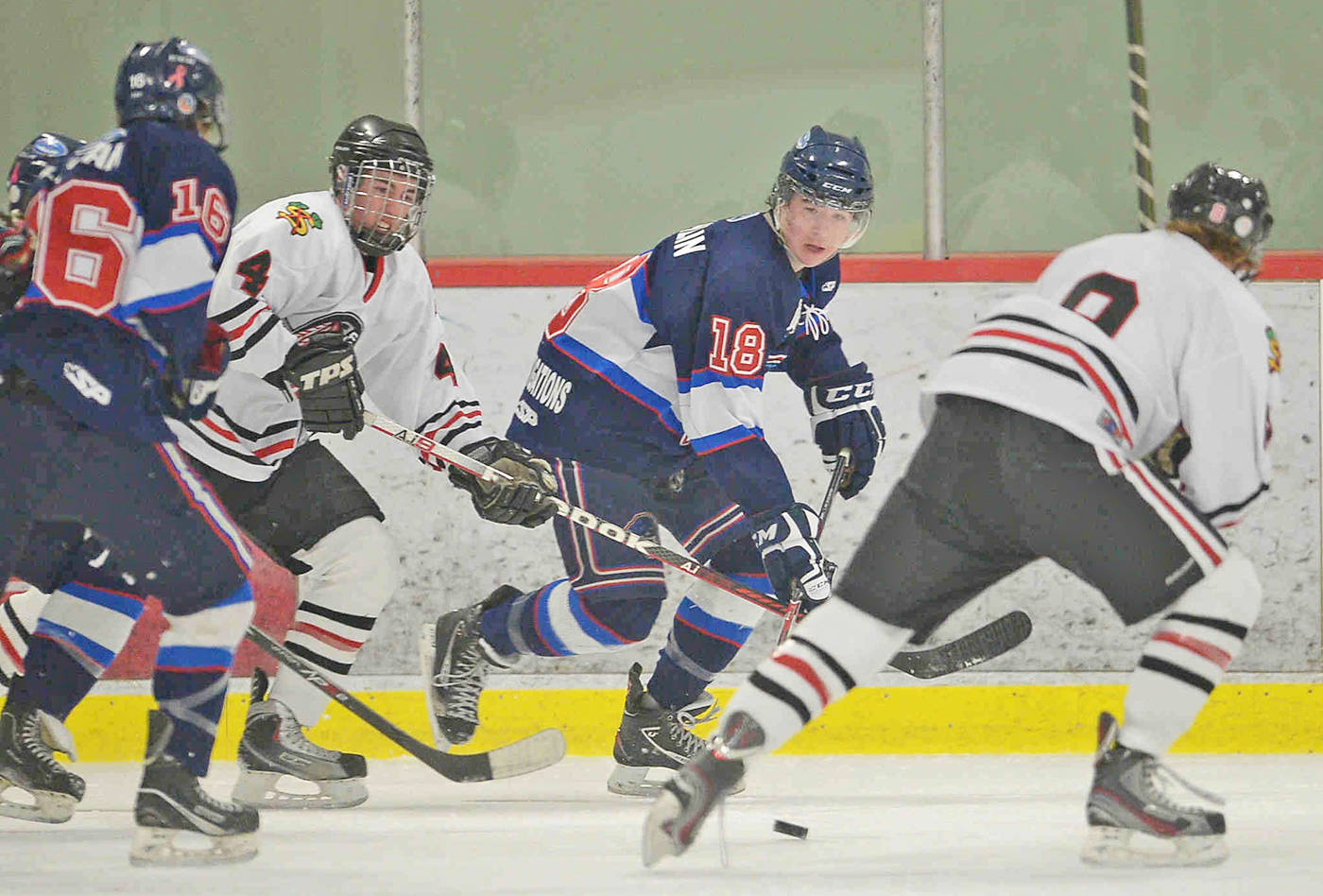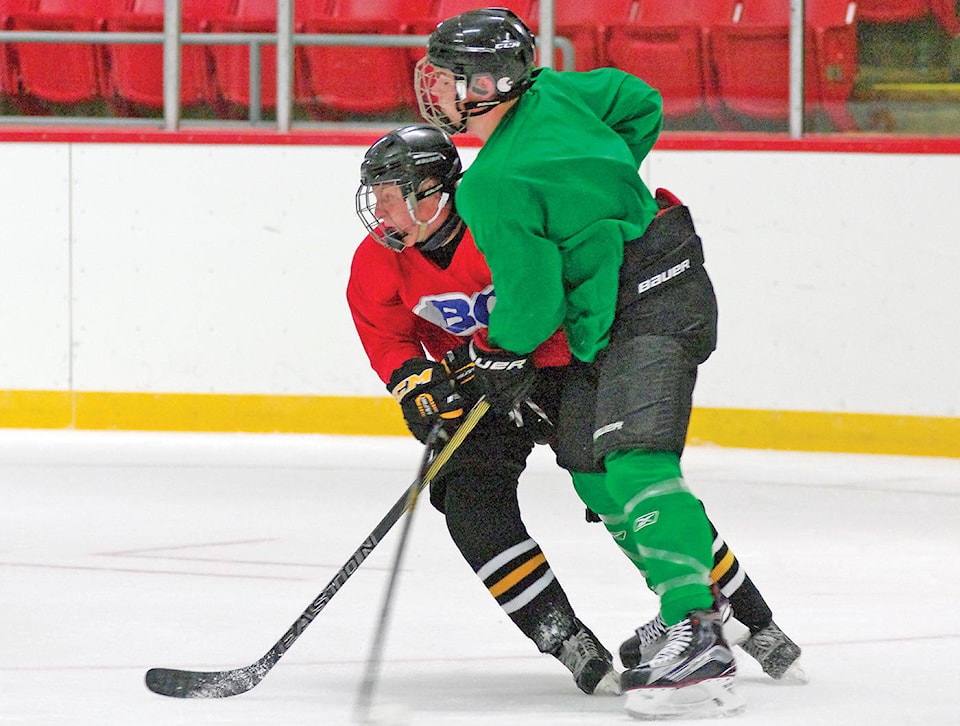When players hit the ice for the Peninsula Panthers Junior B hockey club this season, fans will notice something a little different.
The North Saanich-based hockey team officially announced Monday at BC Hockey headquarters in Saanichton, it will be the first junior club in western Canada to mandate full face protection worn by all of its players. Panthers Governor and General Manager Pete Zubersky said after years of resistance among players, team owners and the Vancouver Island Junior Hockey League (VIJHL) itself, Peninsula is going out on its own to implement full face protection for all of its players.
“Everybody in this league … can think of a time when a visor or face cage could have prevented an injury,” Zubersky said.
The final straw for him came about two weekends ago when this year’s Peninsula Panthers hit the ice to start practices. He said two players — a newcomer in a full face cage and a veteran with a visor — went into the corner. In what Zubersky described as an innocent play, an inadvertent high stick caught the player under his visor and cut his eye.
“Any lower, and that player might have lost his eye. And all on an innocent play.”
Barry Petrachenko, Chief Executive Officer of BC Hockey said they support Peninsula’s move to prevent player injury. He said Zubersky started meeting with him this summer, after VIJHL league meetings and no solid action on the idea. He said change takes time and BC Hockey will be looking at statistics over the coming season and will speak with its other junior hockey member associations. Petrachenko said BC Hockey represents its members and would not simply impose full face protection regulations. That said, he added what Peninsula is doing will be a lot safer for the kids and will be a topic of discussion in rinks throughout the province.
“It’s hard to debate what you know is going to be safer,” he said.
Zubersky said the club spoke with all of its players for the 2017/18 season and gave them four options at first: the status quo; new players wearing full face protection; mandatory face protection, or; optional use of full face protection. However, it was the incident on the ice that prompted Zubersky and Head Coach Brad Tippett to make it mandatory.
Asked if there was any resistance from the players, Zubersky said yes, however some players said it would be fine. He added he thinks players feel it wouldn’t be ‘macho’ to say they’re OK with face protection. He added that it’ll take only a few games before his players get used to it — especially after spending their minor hockey years wearing full face protection.
Panthers’ Head Coach Brad Tippett had first-hand experience with injury to his own face during his playing years. He lost eight teeth and had numerous stitches and pins in his face. Tippett said he was playing NCAA hockey in Michigan in 1981, when they implemented full face cages — and he suffered no injuries to his face during his last two years there.
Tippett added the biggest surprise since they told players about the change, has been the number of parents who have contacted them, glad the team is making this move.
Zubersky said he’s not sure why other teams the league are resistant, other than perhaps players are saying they don’t want it, or it’s not being done for business reasons. Zubersky said it’s about safety. And this season, he said parents will notice the difference and could end up putting more pressure on other teams to adopt full face protection.
“Times have changed and we now have access to more research,” Zubersky stated. “Full facial protection is already mandated through minor hockey and even at some college levels. We believe our players will excel and enjoy the game more when they are properly protected.”




